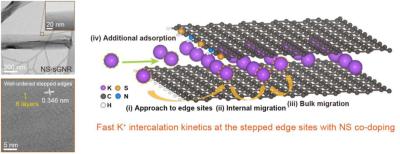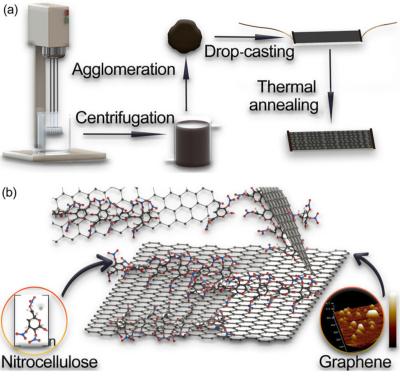Korean researchers fabricate nitrogen and sulfur co-doped graphene nanoribbons for enhanced potassium batteries
A research team, led by Professor Yu Seung-ho of the Department of Chemical and Biological Engineering at Korea University, Seoul National University's Professor Yuanzhe Piao and Sogang University's Professor Back Seo-in, has fabricate nitrogen and sulfur co-doped graphene nanoribbons with stepped edges, elucidating the migration barrier and enhancing the electrochemical performance of potassium batteries.

Potassium has shown promise for large-capacity non-lithium battery cells, because it is affordable, abundant, and has a low redox potential (-2.93V) close to that of lithium ion (-3.04V). Carbon-based nanomaterials, which are chemically stable and lightweight, are popular anode materials used in potassium batteries. However, the high energy barrier between electrochemical intercalation and deintercalation of potassium ions induces adsorption/desorption reactions, resulting in the storage of potassium ions only on the surface of carbon and lowering the energy density during battery assembly. As such, the smooth intercalation/deintercalation of potassium is extremely important in obtaining high-performance potassium batteries.




